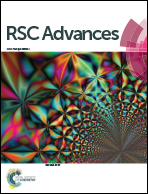Thermoelectric properties for AA- and AB-stacking of a carbon nitride polymorph (C3N4)
Abstract
The transport properties, and electronic structure, for C3N4 were investigated, and it was found that the valence band maximum (VBM) and the conduction band minimum (CBM) of AA-stacking of C3N4 are located at the A point of the Brillouin zone (BZ), resulting in a direct band gap of approximately 0.69 eV (LDA), 0.870 eV (GGA), 1.237 eV (EV-GGA), and 2.589 eV (mBJ). For AB-stacking, the VBM and the CBM are situated at the Γ point of the BZ, maintaining a direct band gap of approximately 1.204 eV (LDA), 1.357 eV (GGA), 1.680 eV (EV-GGA), and 2.990 eV (mBJ). The calculated electronic band structure was used to determine the thermoelectric properties such as electrical conductivity (σ/τ), electronic thermal conductivity (κe/τ), Seebeck coefficient (S), power factor (P), and figure of merit (ZT) using the semi-classical Boltzmann theory as incorporated in the BoltzTraP code. The maximum values of σ for AA-stacking are 3.4 × 1020 (Ω m s)−1 and 1.05 × 1020 (Ω m s)−1, which are achieved at ±0.17 μ(eV) for p-type and n-type materials at 300 and 600 K, respectively. For AB-stacking, the maximum values are 3.8 × 1020 and 3.7 × 1020 (Ω m s)−1 at 300 and 600 K for p-type, whereas they are 2.8 × 1020 (Ω m s)−1 at 300 and 600 K for n-type; these values are achieved at ±0.2 μ(eV) for p-type and n-type. One can see that AA-stacking exhibits the highest S values of approximately 99.0 (μV K−1) for p-type and 98.0 (μV K−1) for n-type, while AB-stacking exhibits the maximum S values of approximately 270 (μV K−1) for p-type and 280 (μV K−1) for n-type. The critical points of S for p-type and n-type are ±0.03 μ(eV) and ±0.08 μ(eV) for AA- and AB-stacking of C3N4, respectively. The values of the critical points are the range where AA- and AB-stacking of C3N4 is expected to exhibit good thermoelectric properties, and beyond these critical points, S is zero. AA-stacking shows the minimum values of the κe between ±0.03 μ(eV), while they are ±0.08 μ(eV) for AB-stacking. Therefore, in these regions, AA- and AB-stacking are expected to exhibit maximum efficiency. The highest peaks of ZT (equal to unity) are confined between ±0.05 μ(eV) for AA-stacking and ±0.1 μ(eV) for AB-stacking.


 Please wait while we load your content...
Please wait while we load your content...